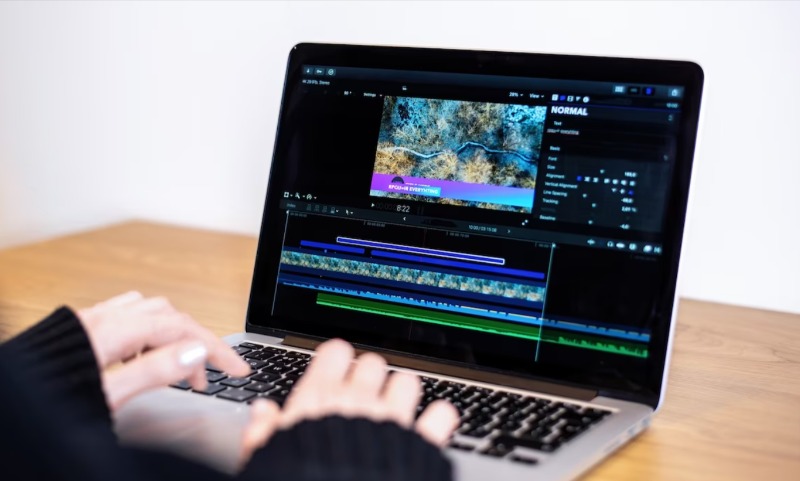
Mastering Motion UI: Elevating User Experience Through Animations and Microinteractions
- Post
- August 9, 2023
- Front-End Frameworks, Front-End Tips & Tricks, Web Development
- 0 Comments
Understanding Motion UI: A Brief Overview
Motion UI encompasses a spectrum of design elements that breathe life into static interfaces. Through purposeful animations and microinteractions, it transforms user interactions into captivating narratives, enhancing usability and engagement. From loading spinners that provide visual feedback to hover effects that invite exploration, motion UI establishes a dynamic connection between users and digital interfaces.
The Psychology Behind Animations and Microinteractions
Human psychology plays a pivotal role in the effectiveness of motion UI. Animations and microinteractions leverage cognitive processes, such as the Zeigarnik effect and the Von Restorff effect, to capture and sustain user attention. By employing motion UI thoughtfully, designers can guide users’ focus, create anticipation, and convey hierarchy, thereby optimizing the overall user experience.
Front-End Design Principles for Motion UI Mastery
Mastering motion UI demands adherence to essential design principles. Clarity, hierarchy, and consistency are paramount, ensuring that animations and microinteractions align seamlessly with the overall design language. By establishing a strong visual hierarchy and adhering to brand guidelines, front-end developers can orchestrate a harmonious dance of elements that resonates with users.
Crafting Seamless User Journeys with Motion UI
Effective motion UI is born from a deep understanding of user journeys. By identifying key touchpoints and moments of interaction, designers can strategically implement animations and microinteractions to guide users intuitively. This process transforms a mundane user journey into an engaging narrative, making the digital experience feel fluid and natural.
Choosing the Right Tools and Technologies
Selecting the appropriate tools and technologies is pivotal in mastering motion UI. From CSS animations and JavaScript libraries to advanced frameworks, front-end developers have a plethora of options at their disposal. By understanding the strengths and limitations of each tool, designers can execute animations flawlessly across different devices and browsers.
Animating Responsively: A Fluid User Experience
In today’s multi-device landscape, responsive animations are crucial for delivering a consistent user experience. Designers must consider viewport sizes, touch interactions, and device orientations to ensure that motion UI remains seamless across a variety of platforms. Fluid animations that adapt to different screen sizes contribute to a polished and user-centric interface.
Elevating E-Commerce: Motion UI in Online Shopping
Motion UI has emerged as a game-changer in the realm of e-commerce. By integrating animations and microinteractions into product listings, shopping carts, and checkout processes, designers can enhance user engagement and facilitate decision-making. Delightful animations can simulate product interactions, providing users with a tactile and immersive shopping experience.
Microinteractions: The Subtle Art of User Guidance
Microinteractions are the unsung heroes of motion UI, playing a crucial role in user guidance. From toggling switches to input validation, microinteractions offer subtle cues that inform users and provide instant feedback. Thoughtful implementation of microinteractions cultivates a sense of control and understanding, elevating the overall usability of an interface.
Performance Optimization: Balancing Aesthetics and Speed
While animations enhance visual appeal, they must not compromise performance. Optimizing motion UI for speed is essential to prevent sluggishness and ensure a smooth user experience. Techniques such as lazy loading, hardware acceleration, and minimizing repaints contribute to a seamless blend of aesthetics and functionality.
Future Perspectives: Motion UI Trends to Watch
As technology evolves, so do the trends in motion UI. From 3D animations that create depth to augmented reality interactions that bridge the digital and physical realms, the future holds exciting possibilities. Staying attuned to emerging trends empowers designers to innovate and create captivating user experiences that push the boundaries of motion UI.
Final Words
Mastering motion UI is a symphony of art and technology, where animations and microinteractions converge to create a harmonious user experience. By embracing the principles, techniques, and design considerations outlined in this guide, front-end developers can wield the power of motion UI to craft interfaces that captivate, guide, and delight users on their digital journeys.
Commonly Asked Questions:
1. What is the primary purpose of motion UI in web design?
Motion UI serves to enhance user experience by employing animations and microinteractions to engage, guide, and provide feedback to users during their interactions with digital interfaces.
2. How do microinteractions contribute to user satisfaction?
Microinteractions offer subtle cues and feedback that empower users, making interactions intuitive and enjoyable. They enhance usability by providing instant responses to user actions.
3. Are there any performance considerations when using motion UI?
Yes, performance is crucial when implementing motion UI. Optimizing animations for speed through techniques like lazy loading and hardware acceleration ensures a seamless user experience.
4. What role does psychology play in motion UI design?
Psychology informs the effectiveness of motion UI by leveraging cognitive principles to capture user attention, convey hierarchy, and create anticipation.
5. How can motion UI benefit e-commerce platforms?
In e-commerce, motion UI can simulate product interactions, guide users through the shopping journey, and enhance engagement, ultimately leading to higher conversion rates and customer satisfaction.



